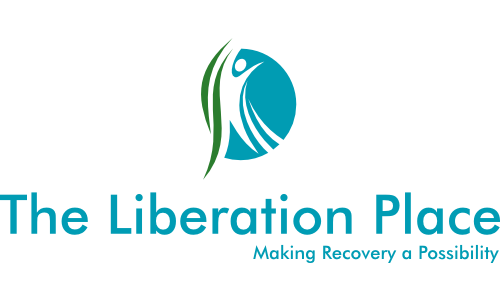What is Schema Therapy?
The integration of Schema Therapy with DBT is where we really begin to disassemble the stories we've been telling ourselves for what may seem like most of our lives. The primary goal behind everything we do at The Liberation Place is to support people in Living the Life they Want to Live. What this basically entails is helping people to figure out the areas of life that are important for them to focus on. Establishing what it means to be the person they want to be in those areas of life, then supporting them with putting things in place to take action to be that way in these important areas.
Sounds really simple right? Well theoretically it is. If we live according to our true core values and beliefs, being the person we want to be in areas of life that are important for us, then we can Live the Life we Want to Live right now. It's not about the things we have, the places we are, or the things we achieve. It's about how we're behaving in everyday life and it's about who we want to be. Clearly, putting this way of life into practice takes hard work and effort, it means looking beyond the instant gratification of external reward, and building internal motivation to keep going in the direction we really want to go.
While Living the Life I Want to Live is a simple thing to talk about, actually living this way is a completely different thing to do. The reason for this difficulty is due to the simple fact that when we try to live our lives according to our true core values and beliefs, in the areas of life that hold the most meaning to us, there's something that gets in the way. That something is what we call our Early Maladaptive Schema.
"If we live according to our true core values and beliefs, in areas of life that are important for us, then we can Love the life we Want to Live right now. It's not about the things we have, the places we are, or the things we achieve."
~Steven Morris RP.
Schema Therapy was developed by Dr. Jeffery Young. In it, he hypothesizes that psychological schemas are like blueprints for the way we see the world. In his extensive research he discovered that we create most of our schemas as children, and once they're in place, they hold the contextual information for the stories that we then generate about our lives. Most, if not all of these stories are based on an accumulation of information from our actual childhood experiences. This information is usually based on specific facts about the things that happened when we were growing up. At the same time, its important to note that sometimes our stories can be slightly skewed by a child’s perception of the way things were during this vulnerable, and impressionable time of our lives, which can change our understanding of what actually happened.
If most of our childhood experiences were positive, then we develop a positive set of stories about ourselves, the world, and the people around us. If our experiences were not so positive, or sometimes even negative, then we can develop a set of stories that filters our perception of who we are, and what life is all about, in a detrimental way. These stories, then become the lens through which we experience the world around us, and they continue to shape how we respond to situations throughout our adult lives. Basically, schemas are the contextual framework from which the content of our own unique individual stories about the past are built. From the perspective of the work we do at The Liberation Place, the most important thing to understand about schemas is that removing a particular story about the past is an extremely difficult thing to do, but changing the rigidity that's attached to the schema being fact in every situation we experience right now is extremely achievable.
"If most of our childhood experiences were positive, then we develop a positive set of stories about ourselves, the world, and the people around us."
~Steven Morris RP.
What Does Schema Therapy Teach us?
Schema Therapy teaches us that because of the nature or temperament that we were born with, and the childhood experiences we had, at the core of our personality system, we develop a Vulnerable Child. This important part of our personality is at the core of all the fear we hold onto, and because of this fear, the Vulnerable Child gets pushed into the shadows of our thoughts and feelings, hidden from the world because of what might happen if it’s exposed for everyone to see. Our personality system is set up to defend this Vulnerable Child whenever it's emotional experience gets activated, and, depending on the level of vulnerability this child holds onto, that activation can occur once a week, once a month, or even multiple times in a single day.
Our lack of awareness for the parts our personality that we're often desperately trying to protect causes us to blend with the thoughts and feelings that they bring into our system. As a result, we start reacting to situations that are happening right now because of the way they remind us of the past. These protective behaviours often get characterized as “who we are” when instead, they are simply automatic, learned behaviour patterns, designed to keep us safe from the things we fear.
Our childhood experiences and the stories we created as a result also play a significant role in the development of what's known as our attachment style. This self-generated way of connecting with other people, which revolves around the previously mentioned set of stories we produced in early childhood, activates the parts of our personality that take over in an attempt to cope with the emotions that are triggered by our childhood re-enactments. These re-enactments either conform with the behaviours we used as children as being the right way to deal with our feelings, or they are a push-back against old stories in a struggle to desperately escape from the life we now find ourselves trapped in.
"Our personality system is set up to defend this Vulnerable Child whenever it gets activated, and, depending on the level of vulnerability this child experiences, that activation can occur once a week, once a month, or multiple times in a single day."
~Steven Morris RP.
The biggest problem with our childhood re-enactments is that they usually play out at a subconscious level, where most of us are generally unaware of them. Consequently, we continue to blend with our parts, and the behaviours they use to cope with an emotion that’s being triggered right now, but one that's actually tied to an old familiar story. This is why I believe that as adults we are constantly living into this past, and rarely do we experience what’s happening in the present moment without the baggage we're holding onto from our most formative years. These reactions are behaviour patterns that schema therapy terms as modes, and while we have a multitude of healthy modes, i.e., parts of our personality that do healthy things, we also have many unhealthy, ineffective modes that, much to our dismay, take us into behavioural places that re-enact old patterns. These are the behaviours that through building self-awareness we are currently trying to change.
This is why in a schema therapy approach, it’s really important to know what our dominant schemas are. Mainly so we can recognize the filters that are influencing the way we see the world when they're present in our system. When we look at our own unique stories, we often notice that there are multiple schemas we identify with, and in any situation, they can cascade into each other, flipping back and forth as the information being filtered to our mind fuels the stories from one that are associated with another. Knowing the dominant schema gives us the information we need to release the burden being carried by or vulnerable child, and without this knowledge we are usually unable to release the vulnerability from our system. On the following pages is a list of Schema to start you on this journey of knowledge. Each one contains a worksheet designed to help you identify the stories you might be holding onto inside of its particular contextual framework.

Download the PDF of this Page




